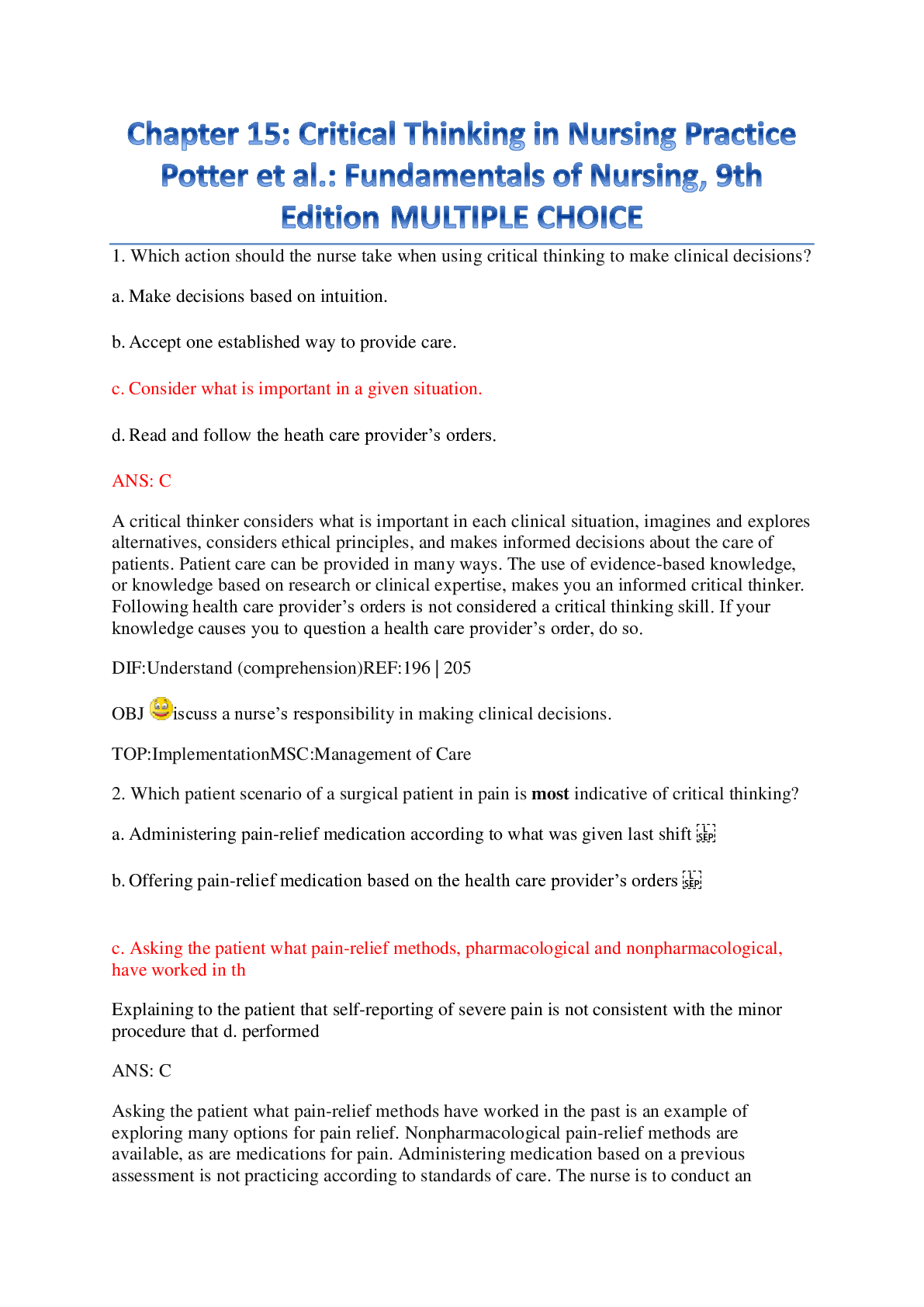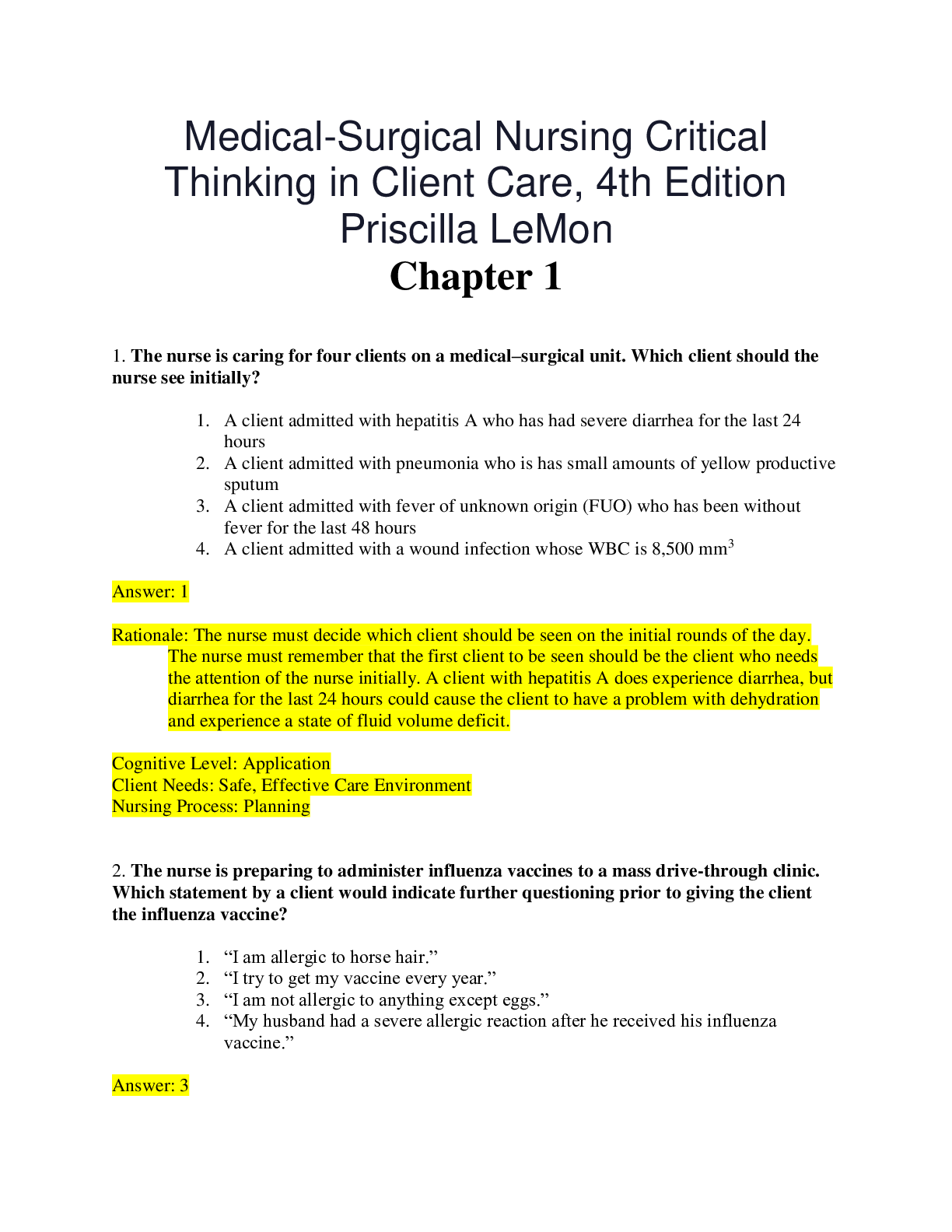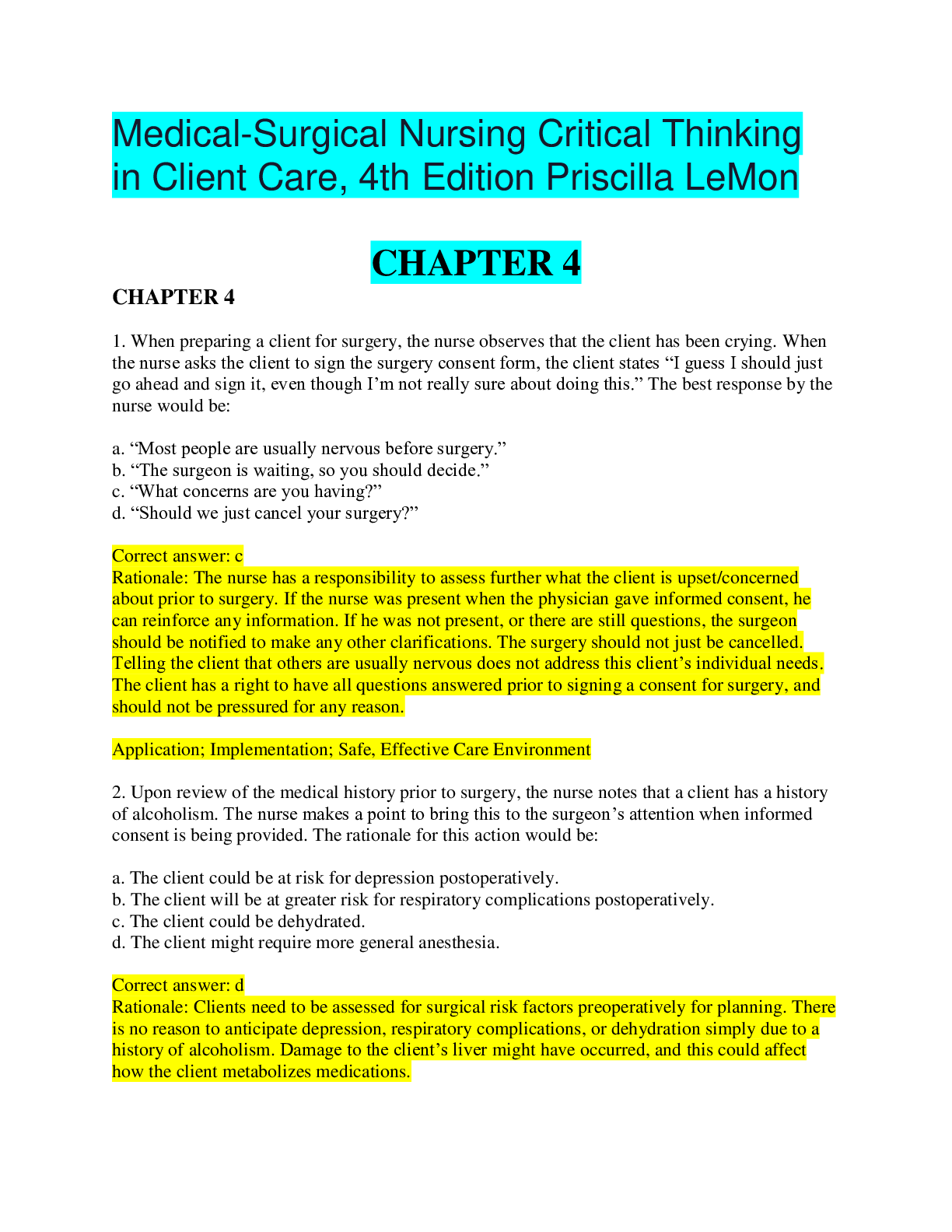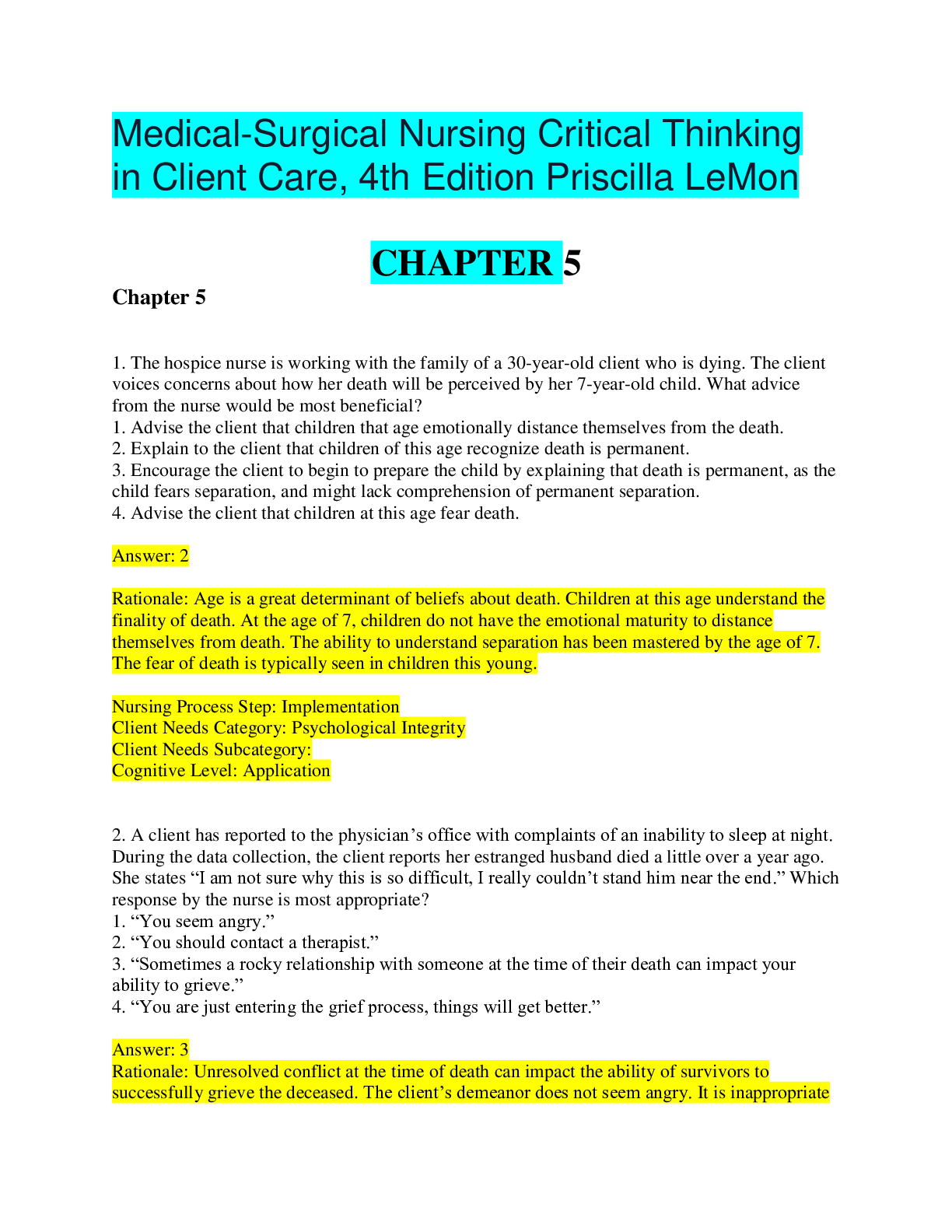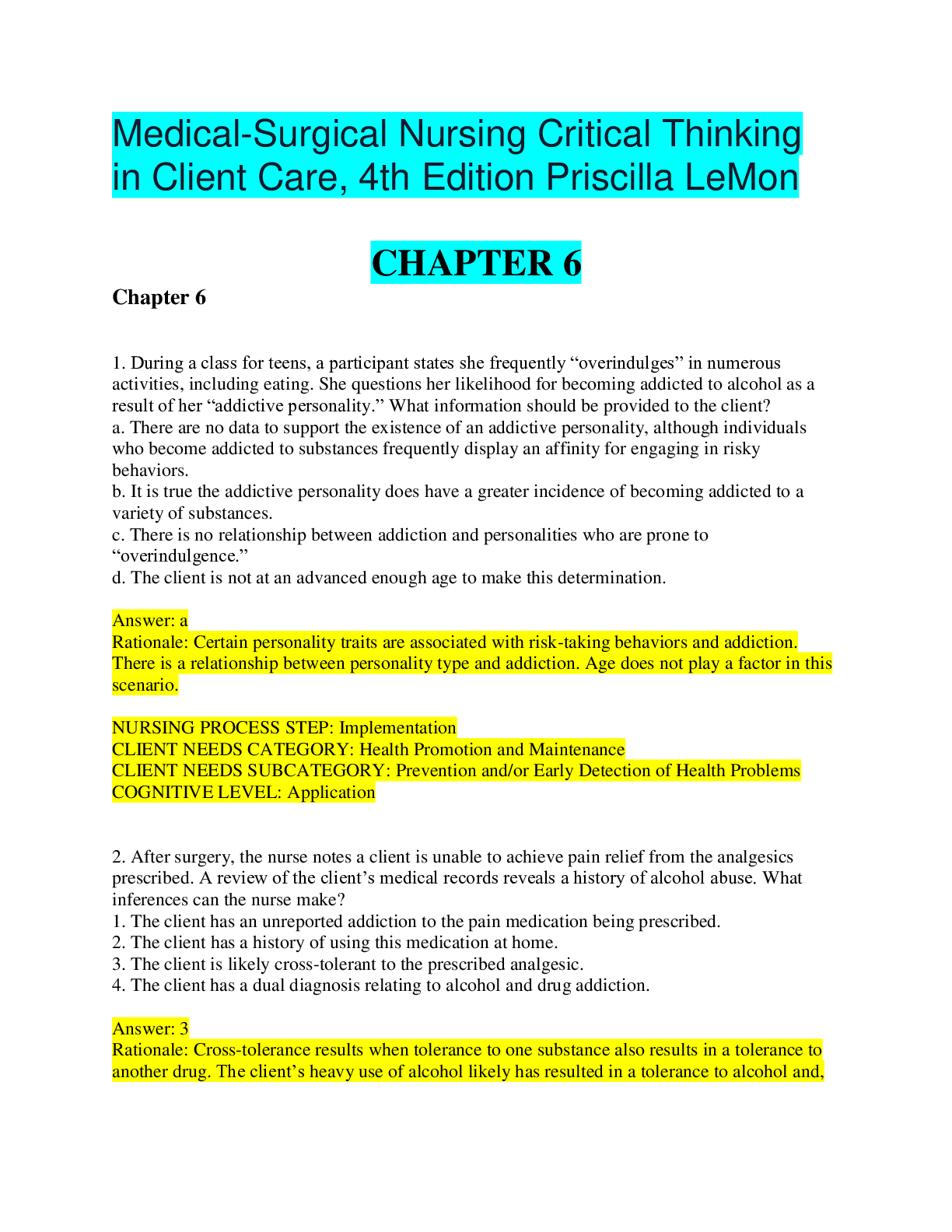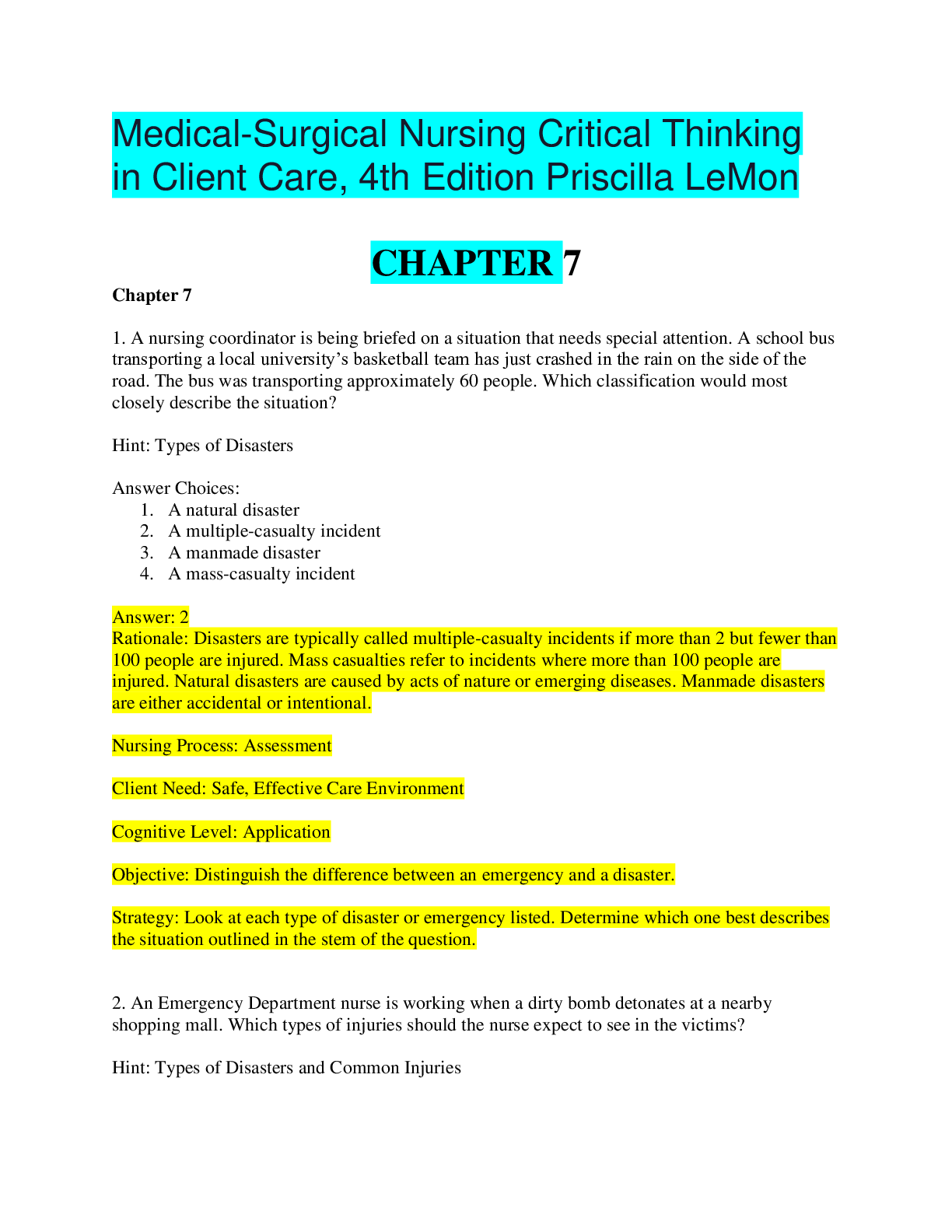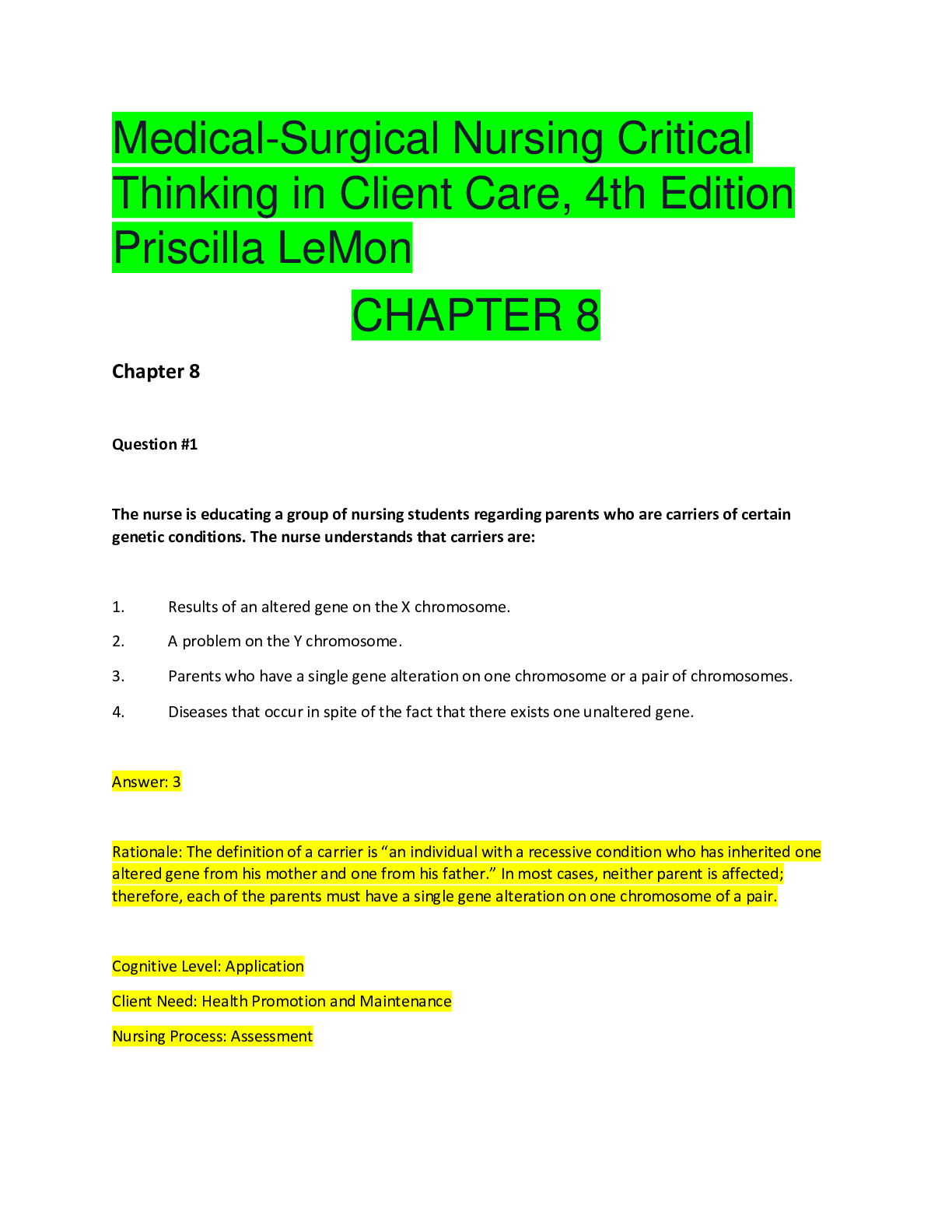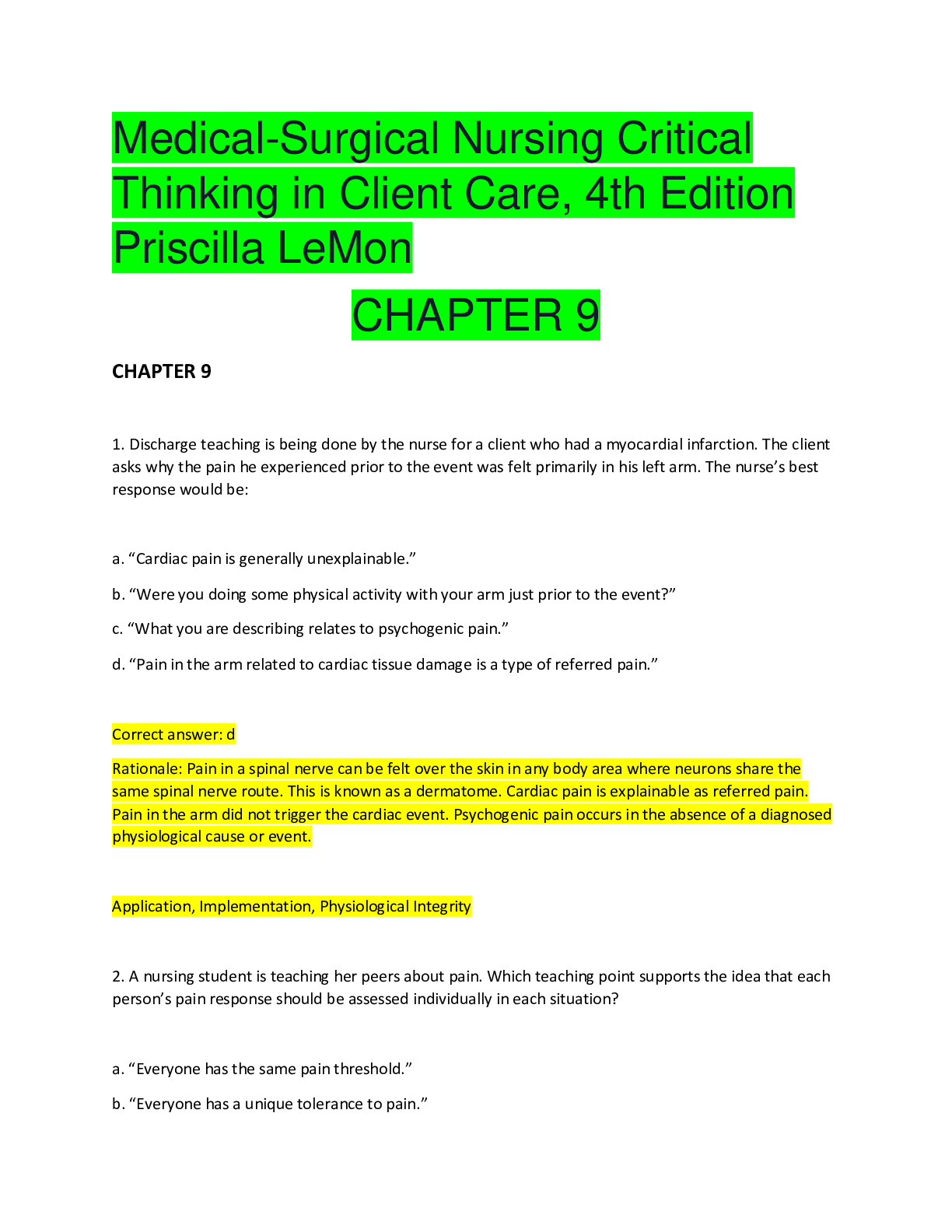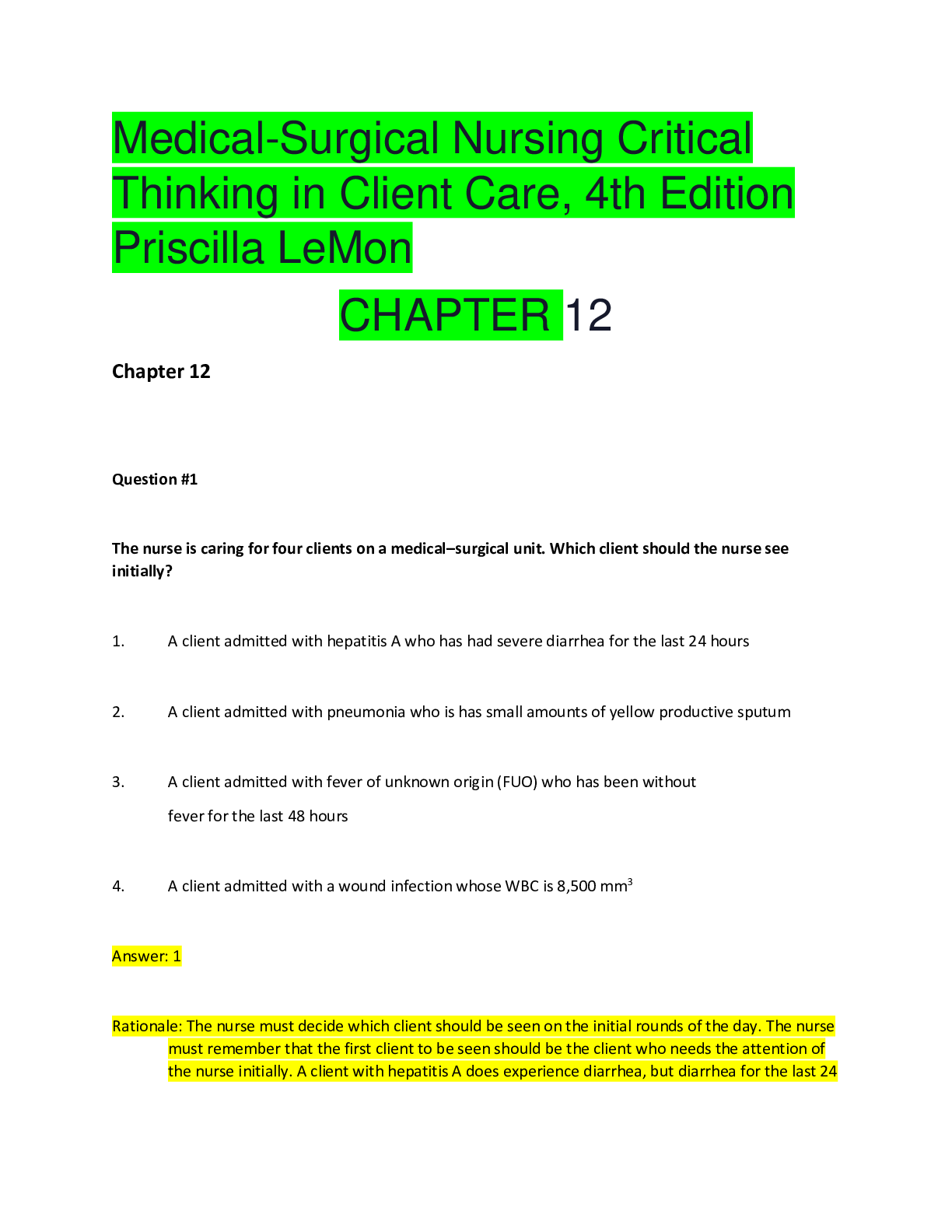Biology > QUESTIONS & ANSWERS > Fresno City College > BIOLOGY 102 > BIOLOGY 102 Medical-Surgical Nursing Critical Thinking in Client (All)
Fresno City College > BIOLOGY 102 > BIOLOGY 102 Medical-Surgical Nursing Critical Thinking in Client Care, 4th Edition Priscilla LeMon CHAPTER 25 ( ALL ANSWERS WITH RATIONALE)
Document Content and Description Below
Medical-Surgical Nursing Critical Thinking in Client Care, 4th Edition Priscilla LeMon CHAPTER 25 Chapter 26 1. The nurse is planning the diet for the client who will be having a barium enema i... n two days. What should be included in the diet? 1. There are no restrictions. 2. Full diet today, then clear liquids tomorrow. 3. Full liquids today, and then n.p.o. tomorrow. 4. Clear liquids both today and tomorrow. 2. The client will be having a sigmoidoscopy to remove two benign polyps. Discharge teaching should include with of the following instructions? 1. Contact physician if large amounts of flatus result. 2. Avoid heavy lifting for two weeks after procedure. 3. Report abdominal pain, fever, or chills. 4. Eat foods high in fiber, beginning the evening of the procedure. 3. A 70-year-old client reports noticing an increasing lack of awareness of the need to defecate. What information should the nurse provide to the client? 1. “This is a normal part of aging due to slowed intestinal absorption.” 2. “As you age, the rectum loses tone, and there is a reduced sensation to defecate.” 3. “Have you had a colonoscopy in the past year to evaluate the condition?” 4. “Reduced vitamin K absorption is associated with this condition.” 4. The client comes to the physician’s office with reports of changes in bowel habits. The nurse is collecting data from the client. Which of the following statements/questions will elicit the most beneficial question relating to the client’s reported concerns? 1. Can you describe your activities in a normal day? 2. Do you have rectal pain? 3. Have your bowel changes created stress for you? 4. Describe the consistency of your bowel movements. 5. A colonoscopy is ordered. The nurse is discussing the pre- and post-procedural care with the client. Which of the following statements by the client indicates the need for further teaching? 1. “The procedure will only take about one hour.” 2. “It might be quite painful.” 3. “I will likely have medications that will make me drowsy during the test.” 4. “The physician might take tissue samples for further analysis.” 6. The nurse is planning care for the patient who will be having a barium enema the next morning. What should be included in the plan of care? 1. Enemas after the procedure 2. Full-liquid diet for 24 hours before the procedure 3. Position the patient on the right side during the procedure. 4. The patient will be n.p.o. for eight hours prior to the procedure. 7. During the admission assessment, the nurse finds the client is having her menstrual period. Which of the ordered tests could be impacted by this information? 1. Small bowel series 2. Barium enema 3. Stool culture 4. Colonoscopy 8. A 64-year-old client reports feeling weak. The physical assessment notes that the client is slightly pale. The physician diagnoses the client as begin mildly anemic. The physician recommends dietary changes. During the counseling session, the client reports frustration, as she feels she regularly eats a balanced diet. What response by the nurse is indicated? 1. “You might not be eating as well as you think.” 2. “This happens as you get older.” 3. “As we age, the amount of iron absorbed by your body is decreased.” 4. “Menopause is responsible for these changes.” 9. During the assessment of the client’s abdomen, frequent pulsations are noted. What action by the nurse is indicated? 1. Document the findings as hyperactive bowel sounds. 2. Review the client’s medical records for signs and symptoms of cirrhosis, as these findings are indicative of ascites. 3. Assess the time when the client last voided, as the bladder is apparently full and becoming distended. 4. Notify the physician related to potential signs consistent with an aortic aneurysm. 10. The client presents with a diagnosis of acute diverticulitis. During the assessment, which of the following findings will most support this diagnosis? 1. Right lower quadrant pain 2. Left lower quadrant pain 3. Upper middle abdominal pain 4. Back pain and tenderness 11. The client presents with pain, nausea, and vomiting. The assessment reveals the discomfort is in the mid-upper abdomen. After completion of the assessment, which of the following diagnoses can the nurse likely anticipate? 1. Appendicitis 2. Peritonitis 3. Pancreatitis 4. Crohn’s disease 12. An unconscious client is brought to the Emergency Department. The assessment reveals the client has a scaphoid abdomen. Based upon your knowledge, what information can you make about the client? 1. The client likely has type 2 diabetes mellitus. 2. The client likely suffers from Crohn’s disease. 3. The client is malnourished. 4. The client is likely suffering from diverticulosis. 13. The nurse is providing teaching to the client planning to have a small bowel series. Which of the following statements by the client indicates the need for further education? 1. “I might experience constipation for a few days after the procedure.” 2. “I will need to increase my fluid intake the first few days after the procedure.” 3. “I might have a laxative prescribed after the procedure.” 4. “The barium will be inserted through my rectum.” 14. The physician suspects the presence of an abdominal mass in a client. An abdominal ultrasound is ordered. Which of the following should be included in instructions provided to the client prior to the procedure? 1. Advise the technician if you suspect you are pregnant. 2. Drink 1–2 quarts one hour before the procedure. 3. Do not eat or drink anything 8–12 hours before the procedure. 4. Take a laxative the evening before the procedure. 15. During data collection, the client reports concerns with constipation. Which of the following findings could signal a source of the problem being reported? 1. Vicodin (hydrocodone) taken twice daily for a recent back injury 2. Acetaminophen used daily for a recent back injury 3. Infrequent use of over-the-counter medications to manage insomnia 4. The use of oral contraceptives to regulate the menstrual cycle [Show More]
Last updated: 1 year ago
Preview 1 out of 10 pages
Instant download

Buy this document to get the full access instantly
Instant Download Access after purchase
Add to cartInstant download
Reviews( 0 )
Document information
Connected school, study & course
About the document
Uploaded On
Apr 13, 2020
Number of pages
10
Written in
Additional information
This document has been written for:
Uploaded
Apr 13, 2020
Downloads
0
Views
39













